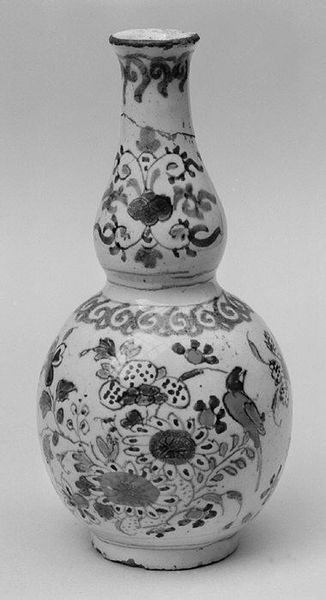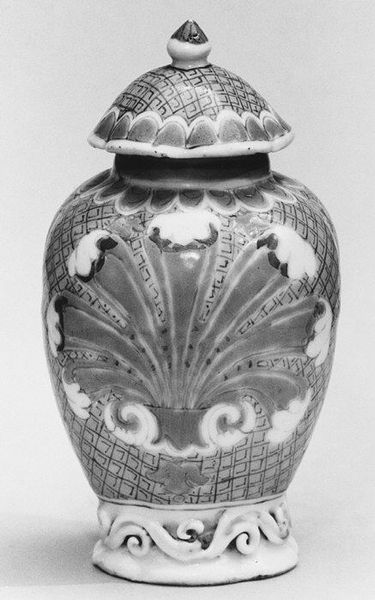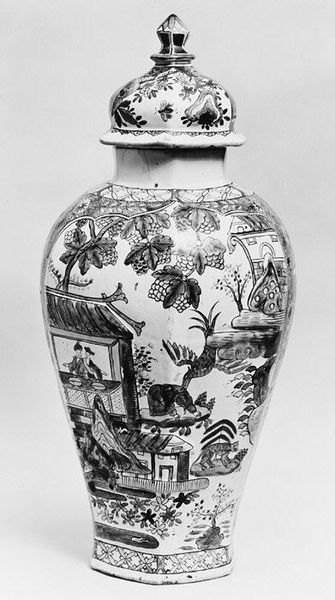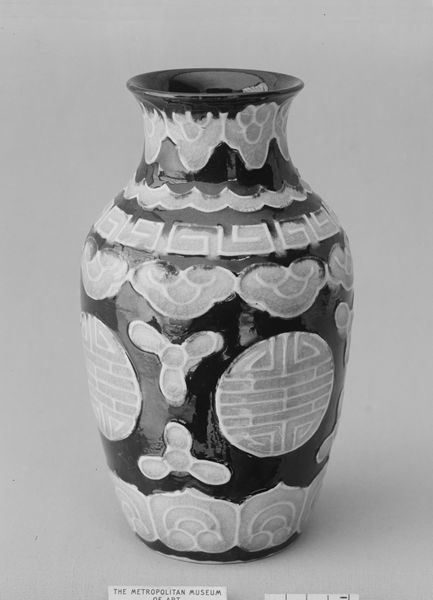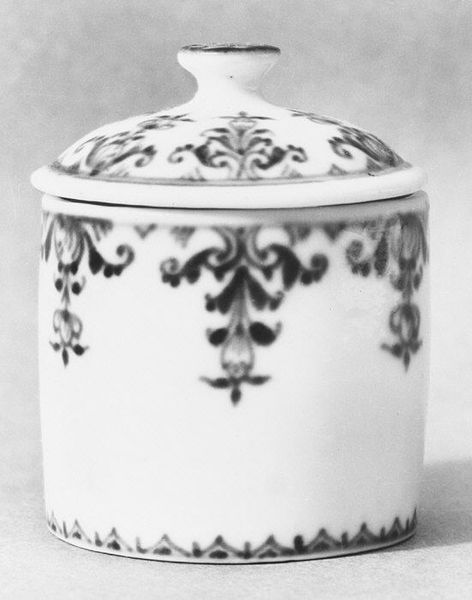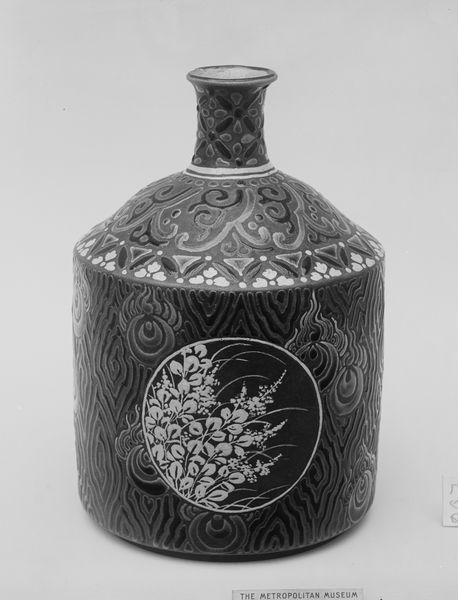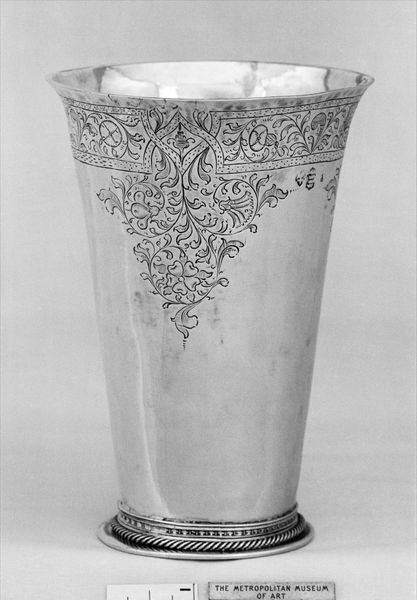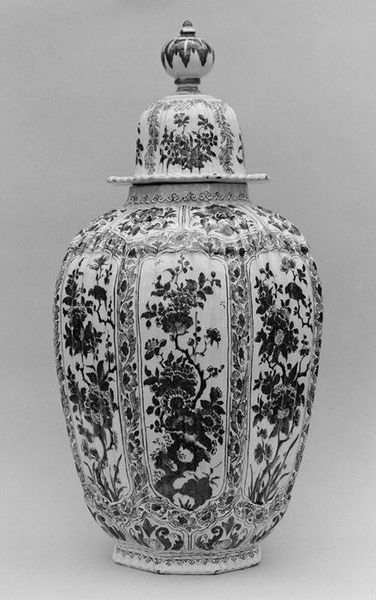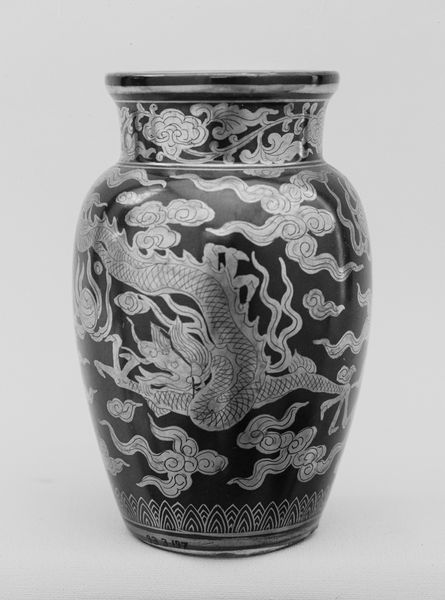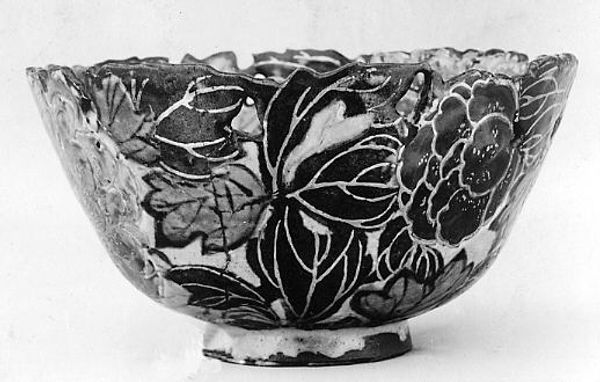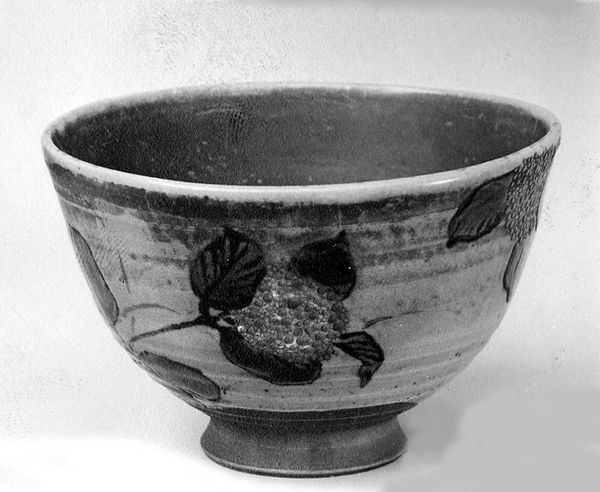
drawing, ceramic
#
drawing
#
asian-art
#
ceramic
#
figuration
#
geometric
Dimensions: H. 2 1/2 in. (6.4 cm)
Copyright: Public Domain
Curator: Here we have a ceramic tea jar by Gorodayu Shonzui, created between 1500 and 1533. It resides here at the Metropolitan Museum of Art. Editor: Oh, what a charming piece! It feels both ancient and whimsical. There's a playful quality to it despite the obviously meticulous craftsmanship. The monochromatic tones gives it an understated feel. Curator: Indeed. Focusing on the visual construction, observe the careful arrangements of geometric patterns paired against the figurative scenes. We see defined zones each emphasizing particular details. The lid is a singular plane capping off complex symmetry. Editor: It makes me think of storytelling. Like tiny vignettes into some forgotten plays acted by masked figures—each circle a different scene, separated yet unified by the jar's gentle curvature and consistent background. The characters seems almost caught in mid-performance, so elegant in monochrome. It feels performative even beyond its utility, a celebration. Curator: I'm interested in how those figurative medallions operate within the matrix of abstract pattern work. Observe how the circle becomes the vehicle, an ordering tool allowing figurative details in tension with the angular designs. It is organized and contained—visual evidence of intentional construction. Editor: Absolutely! It strikes me that the bottom-most layer's wavy design seems to hold or support those figures, not only structurally but in the symbolic sense as well. Water as support, a universal and sustaining metaphor that amplifies the idea that maybe these stories or the idea of community, continue and remain so too. Curator: Your insights introduce emotional perspectives which do enrich interpretations of the formal decisions made during production. Looking at this ceramic object and observing lines, arrangements, balance; they guide us to the core composition but need also embrace context to better serve the piece itself. Editor: You are right—I can be a sentimental sap sometimes. But looking more carefully—that upper maze feels a little sinister. It is all ordered, regimented; each line perfectly plotted, still the pattern has tension that can be interpreted very many ways, from many cultures or standpoints too, not just sentiment. Curator: What a satisfying engagement! A humble piece that is a rich convergence of aesthetic design choices meets an impassioned human reflection and expression! Editor: Right? A great reminder about how art history can spark surprising conversation!
Comments
No comments
Be the first to comment and join the conversation on the ultimate creative platform.
